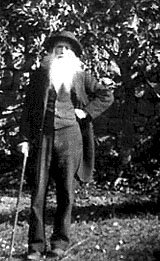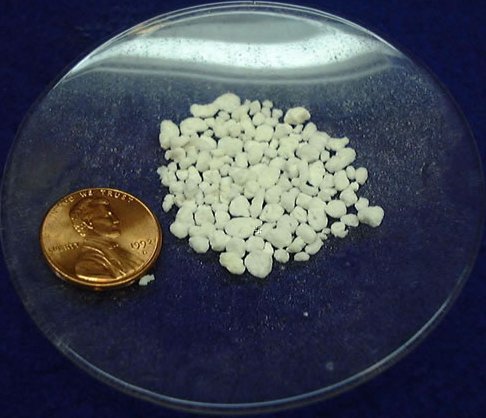|
Sicana Odorifera
''Sicana odorifera'' is a large, herbaceous perennial vine native to tropical South America, grown as an ornamental plant and for its sweet edible fruit. English names include cassabanana or casbanan, sikana, puttigel and musk cucumber. The fast-growing, fleshy vine can reach 15 m or more in height, climbing with four-part adhesive tendrils. The large, hairy, palmately lobed leaves grow to 30 cm in width. The fruit is large, up to 60 cm long, with skin of variable color. The fruit has a delicious, melon-like taste when it is ripe, which needs high temperatures to ripen. The sweet, aromatic, yellow-to-orange flesh of the mature fruit is eaten raw or made into preserves. The immature fruit can be cooked as a vegetable. Cultivation It is propagated by seeds. It is grown widely in the warm parts of Latin America, as well as by the Cajun people of the southern United States. It needs good drainage to grow well, and does well on an acidic mix of sand (or perlite Per ... [...More Info...] [...Related Items...] OR: [Wikipedia] [Google] [Baidu] |
Charles Victor Naudin
Charles Victor Naudin (14 August 1815 in Autun – 19 March 1899 in Antibes) was a French naturalist and botanist. Biography Naudin studied at Bailleul-sur-Thérain in 1825, at Limoux, and at the University of Montpellier from which he graduated in 1837. The following year he was working as a private tutor; he obtained his doctorate in 1842. He taught until 1846, when he joined the herbarium of the National Museum of Natural History. He collaborated with Augustin Saint-Hilaire on the publication of the Brazilian flora and introduced the first seeds of ''Jubaea chilensis'' in France. In 1853, botanists Planch. & Linden published '' Naudinia'' is a monotypic genus of flowering plants from Colombia belonging to the family Rutaceae, and named in Naudin's honour. He taught at Chaptal College as professor of zoology, but a neurological disease left him deaf. He became an assistant naturalist in 1854 and married in 1860. He entered the Academy of Sciences in 1863 where he succ ... [...More Info...] [...Related Items...] OR: [Wikipedia] [Google] [Baidu] |
Tendril
In botany, a tendril is a specialized stem, leaf or petiole with a threadlike shape used by climbing plants for support and attachment, as well as cellular invasion by parasitic plants such as ''Cuscuta''. There are many plants that have tendrils; including sweet peas, passionflower, grapes and Chilean glory-flower. Tendrils respond to touch and to chemical factors by curling, twining, or adhering to suitable structures or hosts. History The earliest and most comprehensive study of tendrils was Charles Darwin's monograph ''On the Movements and Habits of Climbing Plants,'' which was originally published in 1865. This work also coined the term circumnutation to describe the motion of growing stems and tendrils seeking supports. Darwin also observed the phenomenon now known as tendril perversion, in which tendrils adopt the shape of two sections of counter-twisted helices with a transition in the middle. Biology of tendrils In the garden pea, it is only the terminal leaflets ... [...More Info...] [...Related Items...] OR: [Wikipedia] [Google] [Baidu] |
Preserves
Fruit preserves are preparations of fruits whose main preserving agent is sugar and sometimes acid, often stored in glass jars and used as a condiment or spread. There are many varieties of fruit preserves globally, distinguished by the method of preparation, type of fruit used, and place in a meal. Sweet fruit preserves such as jams, jellies, and marmalades are often eaten at breakfast with bread or as an ingredient of a pastry or dessert, whereas more savory and acidic preserves made from " vegetable fruits" such as tomato, squash or zucchini, are eaten alongside savory foods such as cheese, cold meats, and curries. Techniques There are several techniques of making jam, with or without added water. One factor depends on the natural pectin content of the ingredients. When making jam with low pectin fruits like strawberries either high pectin fruit like orange can be added, or additional pectin in the form of pectin powder, citric acid or citrus peels. Often the fruit will be ... [...More Info...] [...Related Items...] OR: [Wikipedia] [Google] [Baidu] |
Cajun People
The Cajuns (; French: ''les Cadjins'' or ''les Cadiens'' ), also known as Louisiana ''Acadians'' (French: ''les Acadiens''), are a Louisiana French ethnicity mainly found in the U.S. state of Louisiana. While Cajuns are usually described as the descendants of the Acadian exiles who went to Louisiana over the course of '' Le Grand Dérangement'', Louisianians frequently use ''Cajun'' as a broad cultural term (particularly when referencing Acadiana) without necessitating descent from the deported Acadians. Although the terms ''Cajun'' and ''Creole'' today are often portrayed as separate identities, Louisianians of Cajun descent have historically been known as Creoles. Cajuns make up a significant portion of south Louisiana's population and have had an enormous impact on the state's culture. While Lower Louisiana had been settled by French colonists since the late 17th century, many Cajuns trace their roots to the influx of Acadian settlers after the Great Expulsion from their ... [...More Info...] [...Related Items...] OR: [Wikipedia] [Google] [Baidu] |
Perlite
Perlite is an amorphous volcanic glass that has a relatively high water content, typically formed by the hydration of obsidian. It occurs naturally and has the unusual property of greatly expanding when heated sufficiently. It is an industrial mineral, suitable "as ceramic flux to lower the sintering temperature", and a commercial product useful for its low density after processing. Properties Perlite softens when it reaches temperatures of . Water trapped in the structure of the material vaporises and escapes, and this causes the expansion of the material to 7–16 times its original volume. The expanded material is a brilliant white, due to the reflectivity of the trapped bubbles. Unexpanded ("raw") perlite has a bulk density around 1100 kg/m3 (1.1 g/cm3), while typical expanded perlite has a bulk density of about 30–150 kg/m3 (0.03–0.150 g/cm3). Typical analysis *70–75% silicon dioxide: SiO2 *12–15% aluminium oxide: Al2O3 *3–4% sodium oxide: Na2O *3–5 ... [...More Info...] [...Related Items...] OR: [Wikipedia] [Google] [Baidu] |
Cucurbitoideae
The Cucurbitoideae are a subfamily of the flowering plant family Cucurbitaceae (gourds). The Cucurbitaceae are divided into two subfamilies, the Zanonioideae, probably a paraphyletic group of remainders, and the well-supported monophyletic Cucurbitoideae. The subfamily Cucurbitoideae consists of eight tribes. Members of the tribe Cucurbiteae produce economically valuable fruits, called gourds, which include crops like squashes (including pumpkins), luffas, and melons (including watermelons). The tribe Benincaseae contains a genus called ''Lagenaria ''Lagenaria'' is a genus of gourd-bearing vines in the squash family (Cucurbitaceae). ''Lagenaria'' contains six species, all of which are indigenous to tropical Africa. References ...
|




